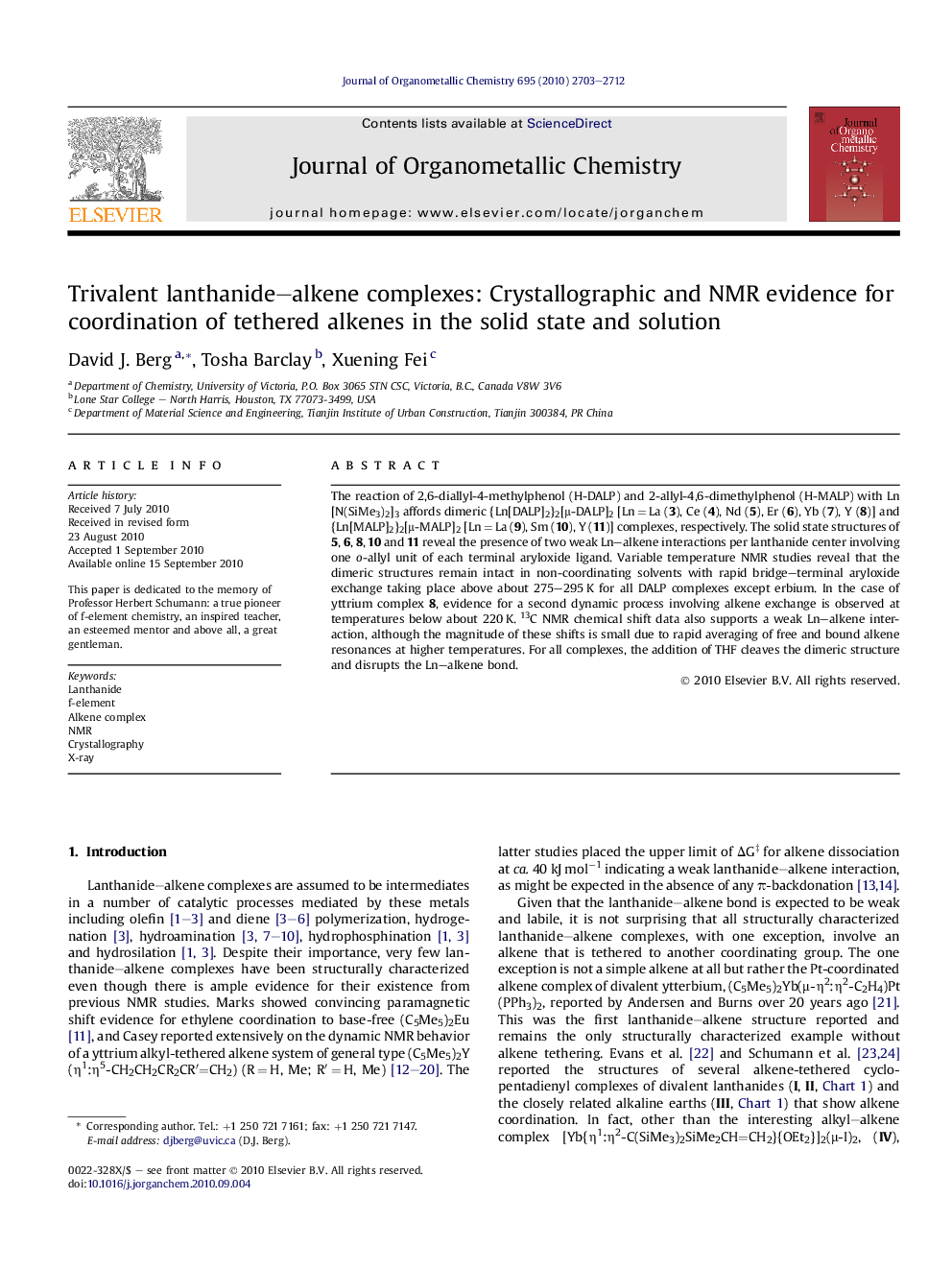| Article ID | Journal | Published Year | Pages | File Type |
|---|---|---|---|---|
| 1325530 | Journal of Organometallic Chemistry | 2010 | 10 Pages |
The reaction of 2,6-diallyl-4-methylphenol (H-DALP) and 2-allyl-4,6-dimethylphenol (H-MALP) with Ln[N(SiMe3)2]3 affords dimeric {Ln[DALP]2}2[μ-DALP]2 [Ln = La (3), Ce (4), Nd (5), Er (6), Yb (7), Y (8)] and {Ln[MALP]2}2[μ-MALP]2 [Ln = La (9), Sm (10), Y (11)] complexes, respectively. The solid state structures of 5, 6, 8, 10 and 11 reveal the presence of two weak Ln–alkene interactions per lanthanide center involving one o-allyl unit of each terminal aryloxide ligand. Variable temperature NMR studies reveal that the dimeric structures remain intact in non-coordinating solvents with rapid bridge–terminal aryloxide exchange taking place above about 275–295 K for all DALP complexes except erbium. In the case of yttrium complex 8, evidence for a second dynamic process involving alkene exchange is observed at temperatures below about 220 K. 13C NMR chemical shift data also supports a weak Ln–alkene interaction, although the magnitude of these shifts is small due to rapid averaging of free and bound alkene resonances at higher temperatures. For all complexes, the addition of THF cleaves the dimeric structure and disrupts the Ln–alkene bond.
Graphical abstractAryloxides bearing ortho-allyl substituents form the first neutral, trivalent lanthanide complexes containing metal–alkene bonds in both the solid state and solution.Figure optionsDownload full-size imageDownload as PowerPoint slide
